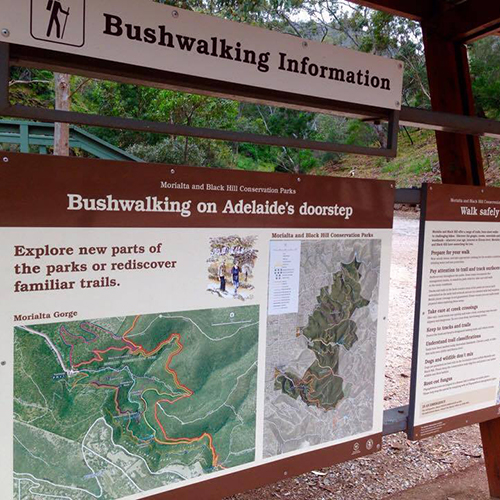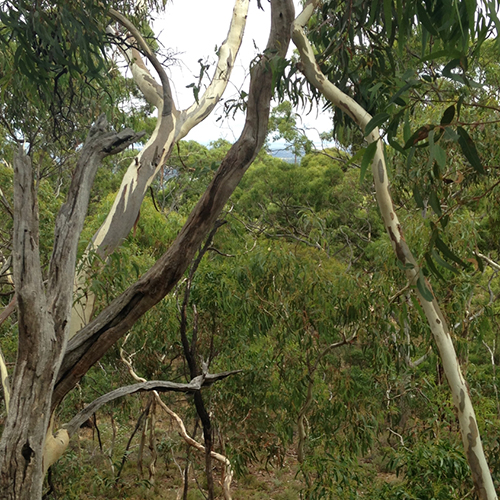20 August 2020
 The most comprehensive plant survey of Morialta Conservation Park in 16 years has flagged potential threats to its fragile ecosystem from the spread of European olive trees and boneseed.
The most comprehensive plant survey of Morialta Conservation Park in 16 years has flagged potential threats to its fragile ecosystem from the spread of European olive trees and boneseed.
The invasive species are a legacy of Adelaide’s early settlers, who shipped in the plants in the 1850s without any understanding of their impact on native vegetation.
A new study led by University of South Australia (UniSA) honours student Jacynta Anderson has identified nine distinct vegetation types at Morialta, dominated by eucalyptus and sheoak woodlands, alongside the introduced European olive and boneseed, which are threatening 10 endangered species.
UniSA scientists identified about 480 different native species at Morialta, representing nearly a third of the 1500 plants found in the Mt Lofty Ranges. Another 300 non-native species were recorded in the park and surrounding suburbs.
“The high number of non-natives in Morialta Conservation Park is likely due to its proximity to human activity near the park entrance and lack of awareness of these vulnerable ecosystems,” according to ecologist Joan Gibbs, an adjunct UniSA Research Fellow, who also worked on the study.
Before the 533-hectare park was acquired by the State Government in 1913, the land was used to graze Angora goats and sheep. Stands of European olive and sugar gum were also widely planted to improve farming productivity.
Morialta has also been a popular leisure reserve since the 19th century, providing an extensive network of walking trails which have helped to disperse invasive seeds further afield.
 “Olive trees uncontrolled can have severe consequences for the ecosystem,” Joan says. “They prevent the regeneration of native plant species and deplete the biodiversity values of the sheoak, pink gum and mallee-box woodlands.”
“Olive trees uncontrolled can have severe consequences for the ecosystem,” Joan says. “They prevent the regeneration of native plant species and deplete the biodiversity values of the sheoak, pink gum and mallee-box woodlands.”
Revegetation projects by volunteers have removed invasive species like blackberry and broom in creek lines, making only small inroads for recovery of native habitats for birds and mammals. Greater efforts are needed to help manage the infestation and save threatened species and ecosystems, the researchers say.
The high cost of removing dense olive stands is one barrier, but wholesale removal could also create erosion detrimental to the vegetation types on steep slopes, so a compromise needs to be found.
Jacynta says increasing numbers of walkers are unconsciously cultivating the growth of invasive species by spreading seeds and diseases via their boots or clothing.
“We need more boot scrubbing stations in the park, particularly in areas where there is high foot traffic, to remove mud, soil, fungal and plant material and stop seeds from spreading to new areas,” she says.
Disinfecting boots before entering and leaving the park could be an option, as well as avoiding wearing clothes or footwear that capture seeds.
The researchers say if no action is taken, it could result in “a considerable loss” of native flora and fauna within one of Adelaide’s most loved national parks.
“Although relatively small, this park is home to 16 per cent of South Australia’s flora and attracts hundreds of thousands of visitors every year. It is important for many reasons and no-one want to see it lose its beauty due to overgrown exotic species,” Jacynta says.
Notes to editors
“High diversity of native plants and vegetation types in the Morialta Conservation Park and the threat of invasive species” is published in Transactions of the Royal Society of South Australia.
Other UniSA contributing authors on the paper include principal supervisor Associate Professor Gunnar Keppel and Dr Gianluca Brunetti.
Media contact: Candy Gibson office +61 8 8302 0961 mobile: +61 434 605 142
email: candy.gibson@unisa.edu.au



